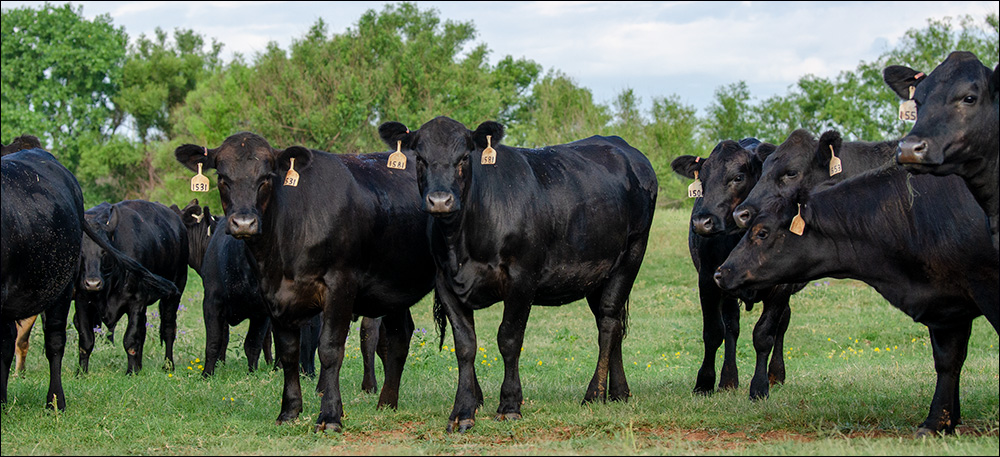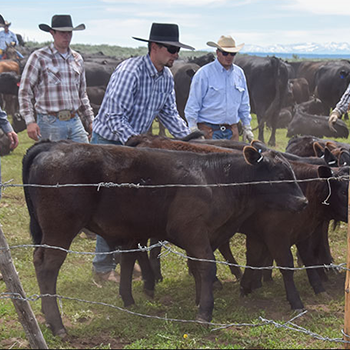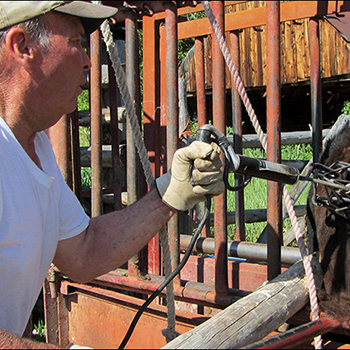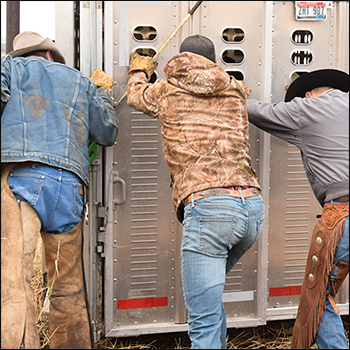
Want to Make it Through Winter? Plan Now
Winter and extended drought mean some different strategies are needed this year.
Worries about drought and how to make it through the winter with limited or no stored forage have monopolized most cattlemen’s thoughts, energy and time. There are some critical steps that need to be made to make it through the colder months.
The first priority is to reduce the stocking rate on the ranch to a level that can be sustained through the rest of the summer and into the fall.
- If you keep or purchase stocker calves to utilize extra grass, this may be the time to sell calves early or send calves to a grow yard or feedlot. Using stocker calves as part of the “normal” stocking rate of the ranch allows for producers to be flexible for drought and other adverse weather events. Many operations use 30%-50% of their summer forage for stockers in normal years. When forage production is limited, these calves can be marketed to reduce culling of the cow herd.
- Also consider selling replacement heifers. These females will not provide a marketable calf for more than a year. In the current situation, these cattle may be too much of a drain of resources.
- Cull the cow herd to a number that you can afford to winter by getting rid of old cows, less productive cows and/or cows that have higher nutrient requirements. Cows that are expected to calve in the fall will require more nutrients to keep them in proper condition, and a higher level of nutrition equates to higher cost of winter feeding. The number of cows remaining may be the actual sustainable long-term carrying capacity for your operation.
- Cross-fence your farm now before you have to start feeding hay. You will be surprised how much forage growth you will have if you allow pastures to rest. Once you have the farm subdivided, you can utilize these pastures in a rotational grazing system in the future and may have the additional benefit of increased pasture health and improved harvest efficiency. Keep cows on a smaller area of your farm while you are feeding hay; this sacrifice paddock will allow much of the ranch a rest and concentrate the nutrients from hay feeding.
These steps may not be palatable, because we may have to change the way we do things. It may take more work than what we want to put in. It may cost more than we want to spend. Yet, our overarching goal should be to have an intact cattle operation when we get through this dry spell.
Proactive steps for winter feeding
Determine how much hay you have and how much you can feed daily for the expected feeding period. If you have as little as 10 pounds of hay available per cow-day, you may not have to purchase more hay or roughage to provide a balanced diet to your cows.
Test your hay or other roughage source. It is impossible to determine what your cows will require without some knowledge of the quality of what you are feeding them. Hay is variable and moderate to low in protein and energy. Crop residues are more variable and generally low in protein and energy.
Consider planting warm-season annuals as a grazing crop in the late summer to fill gaps in early fall forage. Warm-season annuals can produce 4 to 5 tons of dry matter per acre in 45 days when planted in late summer. Grasses like corn and millets do not produce prussic acid when under stress, which can be a concern for sudangrass, Johnsongrass and sorghums when frosted.
Plant cool-season annual grasses in your pastures. The subdivided pastures you created are a great place to establish complementary forages. If you keep the cows off these pastures until they are 6-8 inches tall, they will provide excellent forage for use in the winter or early spring, which will decrease hay feeding and can be used as an early hay or silage crop.
Balance a supplement or feeding program that makes sense in your operation. There is no “one size fits all” feeding program for every cow herd.
Feeding monensin to beef cows has been shown to decrease forage intake 8% without affecting cow body weight or body condition.
Although these steps are not easy and will require thought and some work, if your goal is to keep your operation intact and profitable, they are well worth the effort.
Editor’s note: Paul Beck is a beef nutrition specialist at Oklahoma State University Extension. This article is compiled and reprinted with permission from the Cow-Calf Corner newsletter. Dave Lalman and Beck covered preparation for extended drought in two Rancher’s Thursday Lunchtime webinar presentations. These can be found at https://www.youtube.com/watch?v=e7v-zTmzzHw. Photo by Lindsey Sawin.







